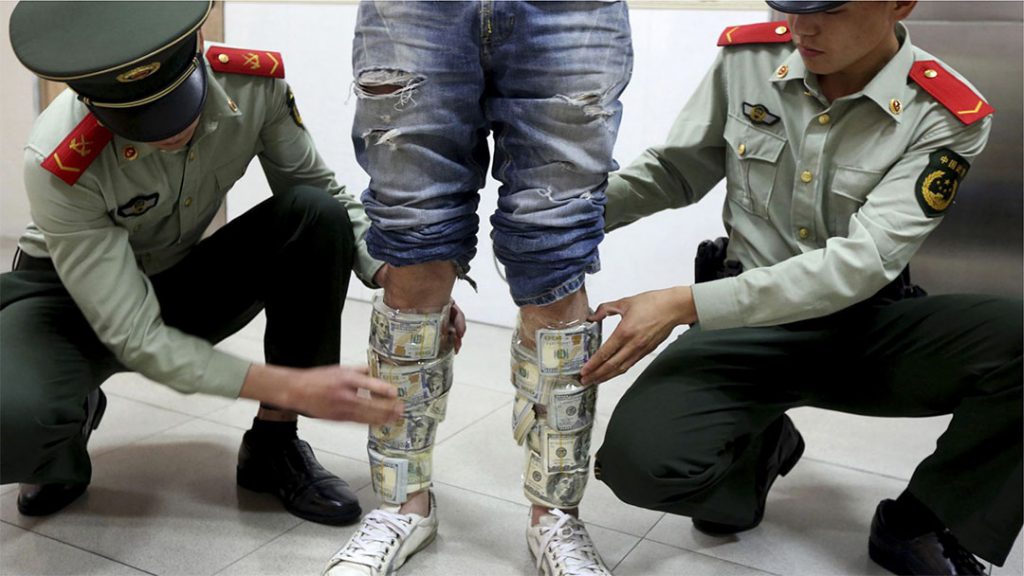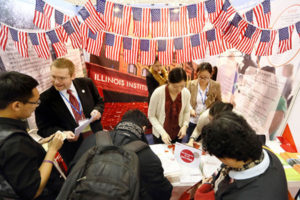EARLY JUNE EACH year in China is gaokao 高考 season, when millions of hopeful pupils enrol in the university entrance examinations. In 2014, 9.4 million students competed for almost seven million places, a high number indeed, although not all places are equal. China’s leading universities only admit the highest scoring candidates. Lower marks leave many with the choice between a mediocre higher education in China and, if they can afford it, an expensive degree in an overseas university.
With the family’s fortunes at stake, parents of students crowd the temples dedicated to Confucius at this time of the year. China’s new middle-class families spare no effort to ingratiate their children with China’s ultimate sage. According to the South China Morning Post, some even hedge their bets by praying to Mao Zedong as well. At the time of the examinations themselves in 2014, the topic ‘gaokao blessing’ 高考祝福 topped the Weibo ranking with fifty-seven million posts.

The Times cover on 5 March 2013: The internationalisation of China’s middle class, who desire greater access not only to education and information but also to international brand-names, holidays and property
Source: offbeatchina.com
The infamous pressure gaokao places on students, and the unavoidable disappointment some of them suffer, results increasingly in their seeking places in universities elsewhere. Over the last decade, many North American, British and Australian universities have become increasingly dependent on full fee-paying Chinese students (see Information Window ‘Chinese Students Abroad’, p.235). The movement of students into universities abroad is also part of the larger trend of the internationalisation of China’s middle class, who desire greater access not only to education and information but also to international name brands, holidays and property (see Chapter 5 ‘Urban, Mobile and Global’, p.204). In 2012, The Economist started a ‘Sinodependency Index’, to map the growing global importance of Chinese consumption to the world economy.
Foreign analysts have long suggested that the globalisation of China’s middle class will also lead them to become more aware of and thus concerned about political restrictions such as those on free expression; that it will make them more interested in democracy. Yet families investing in education or other assets abroad appear more interested in consolidating their privileges and overcoming their anxieties about China’s political and economic future than in precipitating political change by challenging the regime. They may well change the world before they change China.
It is not just about travel and education. Chinese are also becoming more aware of the opportunities offered by a globalised market: a group of over 7000 mainland direct-marketing professionals recently became the largest travel party ever to enter the US. The latest annual Hurun 胡润 report on China’s wealth, published in early 2014, estimates that Chinese with assets of more than US$1 million transferred a total of US$465 billion out of the country in 2011 alone. Sixty-four percent of Chinese millionaires polled for the same report have either taken residence in a second country or are planning to do so.
The movement of private capital (and entrepreneurship) to foreign countries causes the domestic leadership anxiety. This can be seen in a number of measures taken by the government over the last twelve months to keep China’s hard-won prosperity from bleeding over its borders. Beijing’s concerns are not so much with individual consumers or China Inc.’s productive, strategic and lucrative investments. It is with the steady and seemingly uncontrollable drift of private savings to consumer-friendlier economies and the flight of capital, especially that acquired illegally by officials and the wealthiest families (see Information Window ‘Naked Officials’, p.236).

In April 2014, a Hong Kong man was caught trying to cross the border into Shenzhen with US$580,000 taped to his body. In general, travellers are only allowed to carry up to US$5,000 when entering the mainland without submitting a declaration form
Photo: China Daily
Corruption is only part of the story. The wealth of China’s middle class and the rich is also heading overseas because it is becoming more difficult to create and accumulate wealth at home. For over two decades beginning in the 1990s, local and central governments openly engineered the growth of the middle class through subsidising home ownership on a broad scale, especially among employees of the public sector (some of whom would later move into the private sector). Low entry prices and cheap credit enabled this first-generation middle-class, known as the ‘home-owning class’ 房产阶级, to enjoy an unprecedented capacity for discretionary spending. Later, inflation in housing prices made it far harder for the next generation to purchase their own home.
The importance of home ownership for Chinese families goes well beyond the financial value of the property. A recent article in the Guangzhou Daily 广州日报 placed the home at the centre of a family’s ‘chart of social relationships’ 社会关系图. Reflecting deeply held popular beliefs, the newspaper suggested that the location and value of a property determine the opportunities families have. These include the quality of elementary schooling to which their children have access; the type of friends children and adults will make and how well-connected their social networks will be; access to health services and, most importantly according to the chart, the marriageability of the families’ sons. However retrograde these motivations might appear, they undeniably help to shape the strategies of middle-class Chinese families when it comes to buying a home. And satisfying these desires in China itself is becoming increasingly difficult.
Individuals and young families in particular often struggle to gain access to the property market. The recent combination of inflated prices and restrictions on credit to rein in the housing bubble has forced many to abandon their dreams of owning property. By 2011, three first-tier Chinese cities (Beijing, Shanghai and Shenzhen) had already topped the IMF world ranking for the least affordable housing. Beijing’s housing prices were already more than twenty-two times higher than the average yearly household incomes. The same indicator was 6.2 in New York and 9.2 in Sydney, two cities where housing is considered notoriously expensive by local standards.
Urgent attempts by governments to stimulate the construction of moderately priced housing (local governments allocated US$19 billion in 2014 for this purpose) are, for the moment, failing to make a dent. The low affordability of housing risks hurting the bottom line of local governments as well. In the first months of 2014, numerous municipalities experienced a dramatic downturn in sales of land-use rights to construction companies, one of their most important sources of public revenue. Some fast growing cities like Hangzhou, for example, recorded no sale of land rights at all in the usually peak month of May.
Low housing affordability encourages savings over consumption. This damages the prospect that the private reserves of Chinese families will help stimulate and rebalance the country’s economy. Chinese families hold on to more than fifty percent of their income, against a world average of less than twenty percent. The contribution of consumption to the Chinese GDP is still only about thirty-seven percent, much lower than the world average and a sign that China’s growth is still too dependent on investment despite two decades of consumption stimuli.
According to one report, the ‘investable assets’ held by individuals in 2012 was about eighty trillion yuan, double the amount estimated in 2008. All indications suggest that the wealthiest families hold a large portion of these cash savings — and overseas investments in property are becoming more and more attractive to them. In the predictions of the McKinsey Global Institute, Chinese family consumption will increase from ten to twenty-seven trillion yuan annually over the next decade. As this fortune moves offshore, it also expands the ways in which the world depends on China’s growth.
The amount of money flowing into the global property market alone is enough to have an effect on the receiving economies. Hong Kong was an early destination for luxury housing investments, but prices there can now exceed those of even New York, Sydney and London, especially since the Hong Kong government increased stamp duty and introduced new restrictions for non-local buyers.
Chinese investors currently purchase around twelve percent of all new residential real estate built in Australia, and are expected to invest more than AU$44 billion in the Australian property market over the next seven years. Such investments, mainly by private families, will have a significant impact on the affordability of Australian housing. Yet any drying up of Chinese investment would likewise cast a shadow on the sustainability of the Australian construction industry.
London, meanwhile, has seen an increase of 1,500 percent in Chinese investments in real estate from 2010 to 2013 (£54 million to £1 billion). And in 2014, the Chinese surpassed the Russians to top the buyers’ list in Manhattan. Out of every one hundred foreign home buyers in the USA in 2012, eleven were Chinese, up from five percent in 2007.

Chinese investors are dramatically pushing up property prices in Australia. Joe Tan and Elsie Lua bought a three-bedroom house in the catchment area for Glen Waverley, a prestigious Secondary College in
Melbourne, for AU$1,255,000 in December 2013
Photo: Joe Armao/news.domain.com.au
Slower economic growth and housing prices at home are also pushing corporate real estate capital into more profitable markets. In the first quarter of 2014, overseas real estate investments grew by over twenty-five percent. Eighty percent of that growth was in the residential market. Many Chinese corporate real estate projects in Australia and the US, meanwhile, target private Chinese investors and families.
Analysts suggest that new regulations that allow large Chinese wealth and insurance funds to invest in real estate overseas will lead to an even greater outflow of managed private capital into international real estate markets. The recent purchase by China’s Ping An Insurance Group, the nation’s second-largest insurer, of the iconic Lloyds building in London, is only the latest symbol of how much Chinese capital is affecting the new structure of global real estate markets.
Directly or indirectly, China’s private wealth is having a significant impact on world consumer markets, creating opportunities along with expectations and anxiety. Chinese families often try to maximise the return on their investment in overseas education by investing in real estate at the same time, adding an element of wealth creation to the net cost of sending children to study overseas. According to one source in the last five years, the percentage of lower middle-class children sent overseas to study has moved from two to thirty-four percent of the total. Another survey suggested that the number of families who intend to send their children to study abroad is already more than forty percent, although almost half of all families (forty-seven percent) see the financial costs as prohibitive.
The overall cost of such degrees often greatly surpasses the benefits to returnees in a domestic economy increasingly saturated with graduates in mid-level positions: it doesn’t always pay off in terms of better jobs or higher salaries. Faced with a drain on its talent, China struggles to lure back its overseas graduates. The government recently introduced changes to China’s ‘green card’ system to make it easier for established Chinese professionals with an international education and foreign citizenship, as well as other foreign nationals, to live and work in China.
There has also been a recent growth in what is called ‘spiritual consumption’ 精神消费, a cryptic term that means the purchase of services (including health services, education and travel) rather than goods (see Chapter 5 ‘Urban, Mobile and Global’, p.204). Although within China itself, there has been a clampdown on the building of golf courses to preserve land for more productive uses, including agriculture, Chinese developers have become interested in golf courses in the US and Europe. In those countries, golf courses have seen a steady drop in prices and memberships since 2006. Chinese investors have stepped in to feed the increasing appetites of the new and globally mobile middle class for what under Mao was a forbidden recreational activity.
While China’s wealthy are off rescuing the world’s real estate markets from the financial crisis, contributing to the funding of world-class educational institutions and reviving overseas golf courses, some less-privileged Chinese families fight just to get their children into school. The recent dramatic case of Wang Guangrong
王光荣, father of four, who committed suicide in Guangzhou because he could not afford to pay the extra school fees imposed on him for a violation of the family planning policies, is a stark reminder that global mobility is far from universal among China’s families.
Chinese Students Abroad, by Jeremy Goldkorn

The USA is still the top choice for Chinese students seeking an education abroad
Source: usa.chinadaily.com.cn
China is the world’s biggest exporter of students. More than three million Chinese travelled overseas for educational purposes between 1978 and 2013. In 2013, there were 413,900. While this represented a 3.58 percent rise over the previous year, the Chinese Ministry of Education reports that this was the first year that the growth rate declined to a single digit level after five continuous years of double digit growth. The Chronicle of Higher Education reported in August 2014: ‘American graduate schools … reported no rise in offers of admission to Chinese students, the first time in eight years with no growth’.
Yet the US remained Chinese students’ favoured destination. According to the Ministry of Education, in the 2012–2013 school year a total of 235,597 Chinese citizens were studying there. The UK hosted a total of 56,535 Chinese students in the 2012–2013 school year and Australia 78,277, though this figure seems to include the 25,000 students reported by Chinese media to have been studying in New Zealand in 2012. Chinese media reports that another 25,346 Chinese students were enrolled in Canada in 2012. According to Eol.cn, an official education portal site, the top destinations for outward bound students are:
- USA 30%
- UK 21%
- Australia 13%
- Canada 10%
- Hong Kong 7%
- Japan 5%
- France 4%
- Germany 2%
- Singapore 2%
- South Korea 1%
- Others 5%
Naked Officials, by Luigi Tomba
After first appearing in a popular blog in 2008, the expression ‘naked official’ entered everyday language. It describes party and government officials who send their families and, with them, large chunks of their suspicious fortunes to Hong Kong or Western countries, including, on occasion, tax havens with no extradition treaty with China, without a legitimate work-related reason. They acquire residency or citizenship in these places thanks to investments in real estate or local enterprises, enrolment in educational institutions or other forms of contribution to the local economies.
In January 2014, the Party named naked officials one of the major targets of its anti-corruption campaign. A central party document warned that for an official to relocate his or her family overseas would be enough to block their promotion, if not worse.
Media commentaries exposed cases of naked officials and criticised them for their ‘lack of patriotism’ and commitment to their duties as public servants. The media also stressed the importance of family support for the good performance of Chinese public servants. But there is no question that the real worry for the government is that any public official on a set salary who can afford to send families and patrimonies overseas is doing so with ill-gotten gains.
According to one People’s Bank of China report, 18,000 officials left the country between 1995 and 2008, taking assets (whether legally or illegally acquired) valued at 800 billion yuan, and the trend has been on the rise. The assessment of Central Party School Professor Lin Zhe 林喆 as reported in Caixin revealed that, from 1995 to 2005, China had 1.8 million naked officials.
A prominent recent case was that of Fang Xuan 方旋, Guangzhou’s deputy party secretary, who was forced to retire prematurely in May 2014, only a few weeks before his boss, Wan Qingliang 万庆良, was indicted on much worse charges of corruption. There followed a wave of demotions of officials from other cities in Guangdong province for the same reason while still others scrambled to recall their families from overseas to save their careers. The Guangdong campaign has publically identified 1,000 naked officials as a model and a warning for the rest of the country; about 900 of these have reportedly already been disciplined or demoted.
Hu Chunhua 胡春花, the recently appointed Party Secretary of Guangdong, widely seen as a front-runner for the top job in Beijing at the next transition, has been particularly zealous in his implementation of the central government’s anti-corruption drive. He has introduced large scale ‘democratic life meetings’ 民主生活会 for officials who are party members, with criticism and self-criticism sessions inspired by Maoist practices to address the concern, first expressed by party leaders in the 1920s and 1930s, that party officials maintain a lifestyle compatible with Communist ideology.
The campaign against naked officials is ‘going global’ as well: ‘Operation Fox Hunt’ (see p.223) has reached Australia, where ninety percent of all applicants in Australia’s ‘Significant Investor Visa’ scheme are from the People’s Republic. The Australian Federal Police have agreed to collaborate with Chinese authorities to seize the assets of Chinese citizens alleged to be laundering the returns of corrupt activities into investments in Australia.



